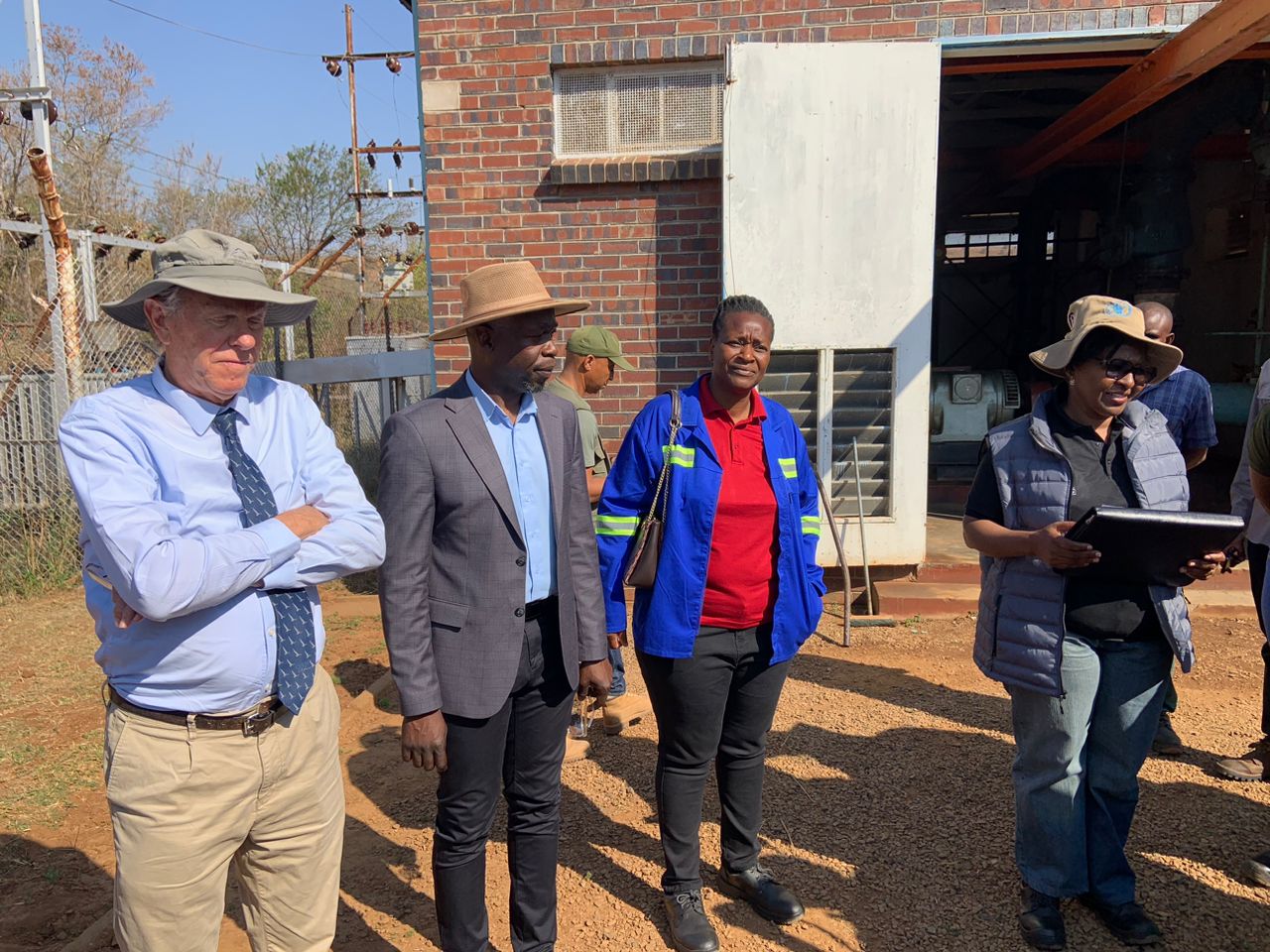Bulawayo Mayor David Coltart has pleaded with the government to release the funding it promised for the city’s rehabilitation works.
Coltart stated that the government was supposed to have released US$14 million since April but had so far disbursed only US$1.5 million, which was paid in local currency.
“We thank the government for its intervention. It paid ZiG7 billion in January, and in April I met with the Minister of Finance, Prof Mthuli Ncube, who promised that the city would receive US$14 million to address our short-term needs,” Mayor Coltart stated during a tour of Mzingwane project sites on Friday.
“Following that meeting, we received an initial amount of US$1.5 million, but it was in ZiG. We need hard currency because our engineers will tell you these pumps are not manufactured in Zimbabwe; they are manufactured externally.”
The mayor stressed the urgency of releasing the remaining funds, adding that many components needed to improve the water reticulation system are imported and require hard currency.
“Our plea is to release the balance of the US$14 million promised by Minister Ncube. The money we have received to date has been used for Mzingwane and Inyankuni,” he said.
“If you look down, you will see an exposed piece of solid two pipelines, one being the major pipeline that comes from Mzingwane, and the other smaller pipeline from Mtshabezi. Mtshabezi still has water sitting at 53 percent. It may be our final solution, but we cannot pump sufficient water from Mtshabezi.”
The mayor noted that as wonderful as the Mzingwane pump station is, it cannot logically pump water coming from downstream, so it needed a diversionary pipeline to come upstream. This is why the government has to release the extra funds so that the diversion pipeline can be used, he added.
“The pump station pumps water from the Mzingwane water, which is empty. Our engineers, supported by the technical committee, have agreed that it is not just a question of upgrading the pumps. You have to divert this pipeline in the river upstream of this pump station so that these new pumps can then pump that water, and that is critical,” Coltart said, stressing that this work must be done urgently.
“This must be done now, ideally within weeks. Unfortunately, because we have not received the further amount promised by the government, we don’t have the funding to do that diversion. Until there is a diversionary pipeline, the Mzingwane pump station will sit idle,” warned the mayor.
“We will have new pumps that will not be pumping water. That’s number one on Umzingwane pump station,” he said.
Coltart also highlighted that the other key water source for Bulawayo, the Insiza pipeline, had infrastructural challenges.
“Insiza is sitting at 44 percent. It is a large dam, our biggest dam, and it is a substantial body of water that can take us through this crisis period, but there is a problem with the Insiza pipeline,” he said.
However, the pipeline, built in the 1970s and expanded in the 1990s, has not been upgraded to match the dam’s increased capacity. This has resulted in a significant reduction in water flow due to silt buildup.
“When the dam’s capacity was tripled, no effort was made to change the capacity of the original pipeline, which is gravity-fed and was constructed in the 1970s. In other words, you have a pipeline designed for a dam one-third the current size of Insiza,” Coltart noted.
“That situation is further compounded by the fact that the pipeline is a gravity pipeline that follows the contours of the land. Over the years—decades—there has been a buildup of silt in the troughs, and that has not been cleared.”
As a result of these infrastructural deficits, the capacity of Insiza is at least 18 to 20 megaliters below capacity per day.
“The point we are making is we need that extra money to address the Insiza pipeline. This is not a long-term, medium-term, but a short-term emergency. Until we get that Insiza pipeline working to full capacity, there is a danger that we will run short of water from other sources,” Coltart stressed.
Coltart warned of the impending decommissioning of Lower Ncema and Upper Ncema dams by the end of October, meaning Bulawayo will be heavily reliant on Mtshabezi, Insiza, and Inyankuni.
“If you look at Inyankuni figures, it is presently sitting at 22 percent. As wonderful as the pumping installation is at Inyankuni, the reality is that if we have another drought this year, we will have new pumps with no water to pump,” he stressed once again.
“This illustrates where our priorities have to be—to upgrade the Mtshabezi pipeline to get it coming to the station and to upgrade the Insiza pipeline. To do that, we need the extra funds promised by the government, and we need those funds yesterday.”
Coltart said these rehabilitation works required considerable planning, which was why the plea for funds was urgent.
“Imagine diverting this pipeline; it is not done overnight, but we need to have a sense of urgency. That’s why I am stressing that we face a catastrophe in the short term if these measures are not completed,” he said.

